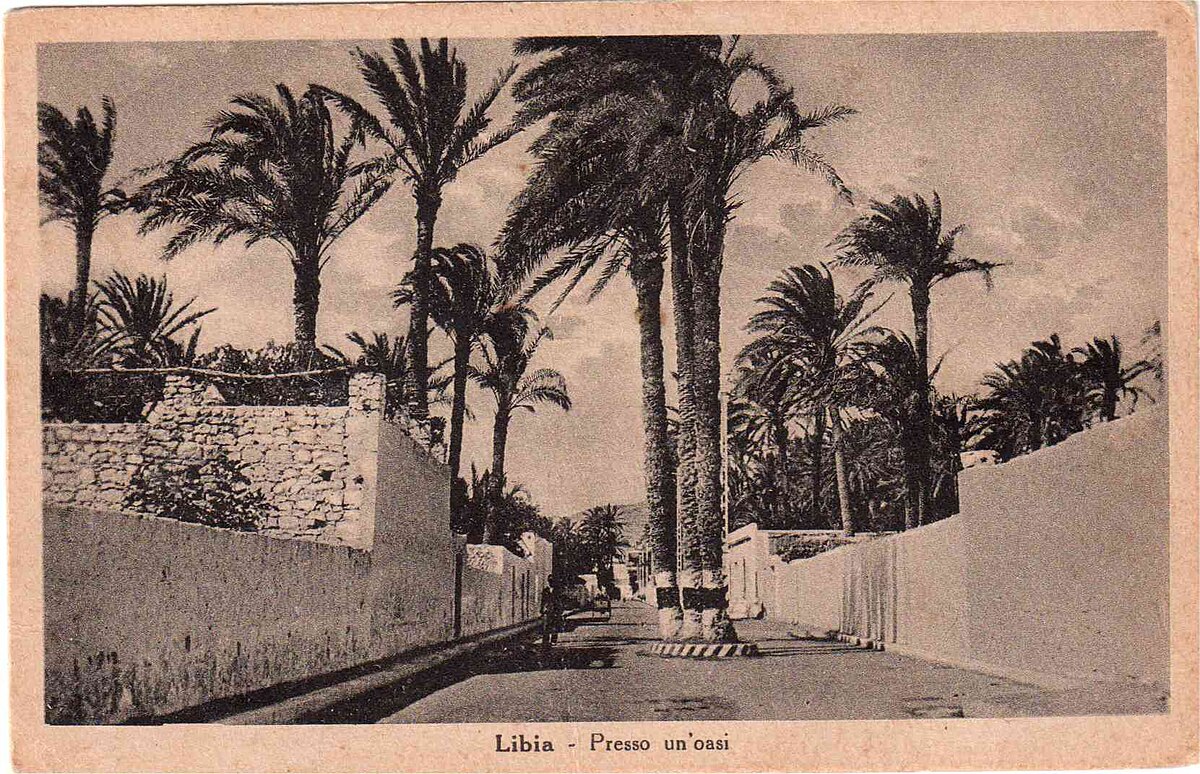A place in the sun for Italians
The emigration of Italians to the colonies in Africa

1935 postcard depicting an oasis in Italian Libya. The creation of an exotic and idyllic imagery of palm trees, oases, fertile lands and seductive indigenous women was instrumental in inducing thousands of Italians to move to Libya and East Africa. - Commons Wikimedia
At the end of the 19th century, the Italian government encouraged the emigration of settlers to the territories it had conquered in Africa. The goal was to identify alternative destinations for the massive migratory flows of the population, which had traditionally been directed toward the Americas and other European countries. There was also a project to “civilize” the territories and populations that had been conquered, developing otherwise unproductive lands. The government, therefore, began promoting emigration to the colonies, emphasizing the potential fertility of the new territories.
The first attempt at colonization was made in Eritrea. A large amount of land and livestock was confiscated from the local population and redistributed to the settlers who would arrive. However, the results were initially disappointing: during the first years, only a few thousand Italians settled there, and the region's productivity proved underwhelming.
The situation was different in Libya. Conquered in 1911 and perceived as a vast, fertile, and sparsely populated territory, the primary goal of the government was to make Libya a settler colony. Thanks to its geographical proximity and especially during the Fascist era, massive migrations took place, primarily from the poorest and most overpopulated regions of Italy. Libya even earned the nickname “The New America of the Italians.”
By the eve of World War II, more than 270,000 Italians lived in African colonies, excluding military personnel. Of these, over 100,000 resided in Libya, and nearly 170,000 were spread across Ethiopia, Somalia, and Eritrea. In Libya, Italians primarily settled in agricultural villages specifically created for them, whereas in Italian East Africa, they tended to settle in cities or their immediate outskirts.
In both cases, settlers generally lived separately from the local population due to a perceived sense of cultural superiority and the different laws applied to them compared to the indigenous people. After the war, Italy lost its African possessions, and nearly all the Italians residing in these territories eventually returned to the country.
Francesco Filippi, Noi però gli abbiamo fatto le strade. Le colonie italiane tra bugie, razzismi e amnesie, Bollati Boringhieri, 2021
2025-06-28
Salvatore Ciccarello
